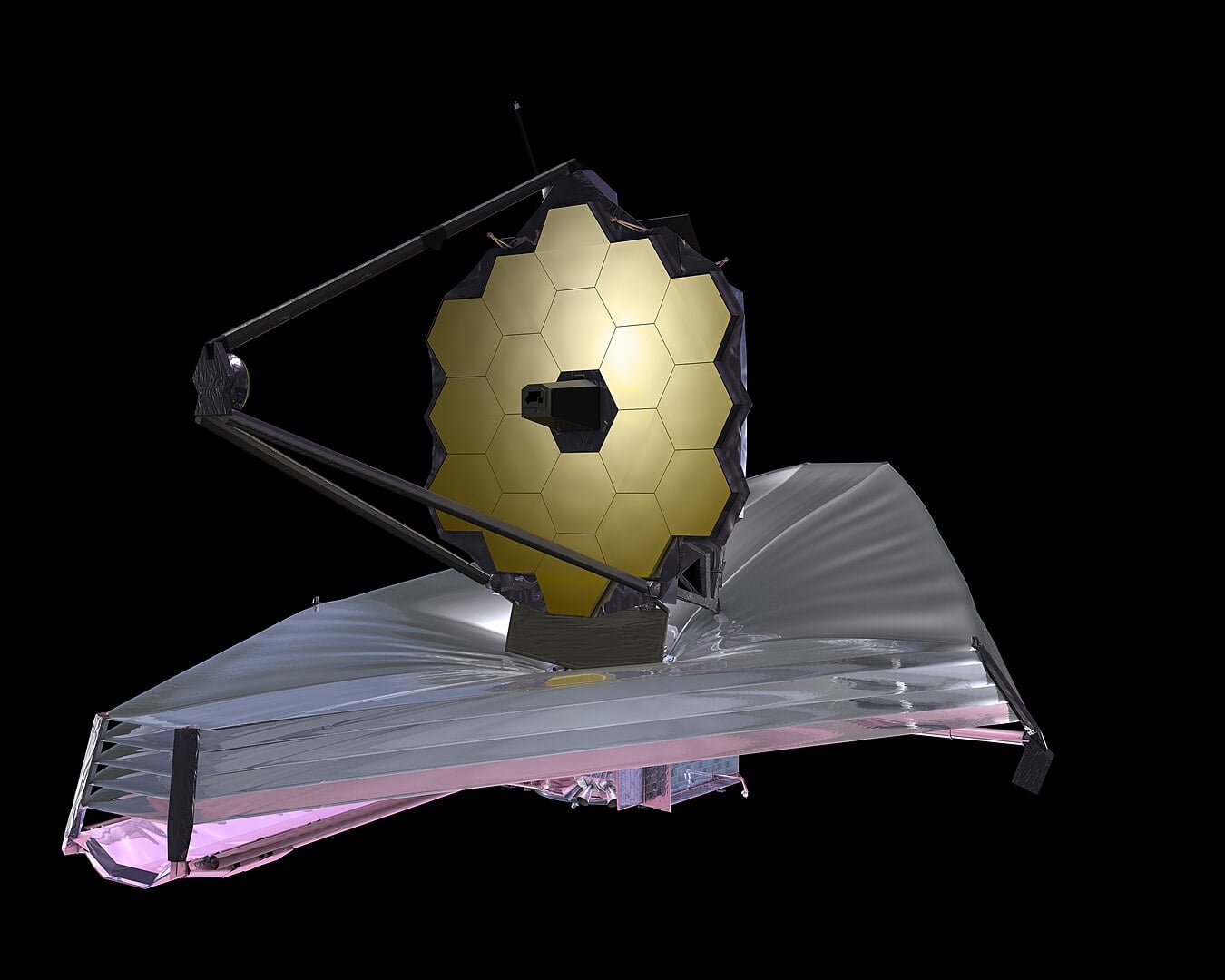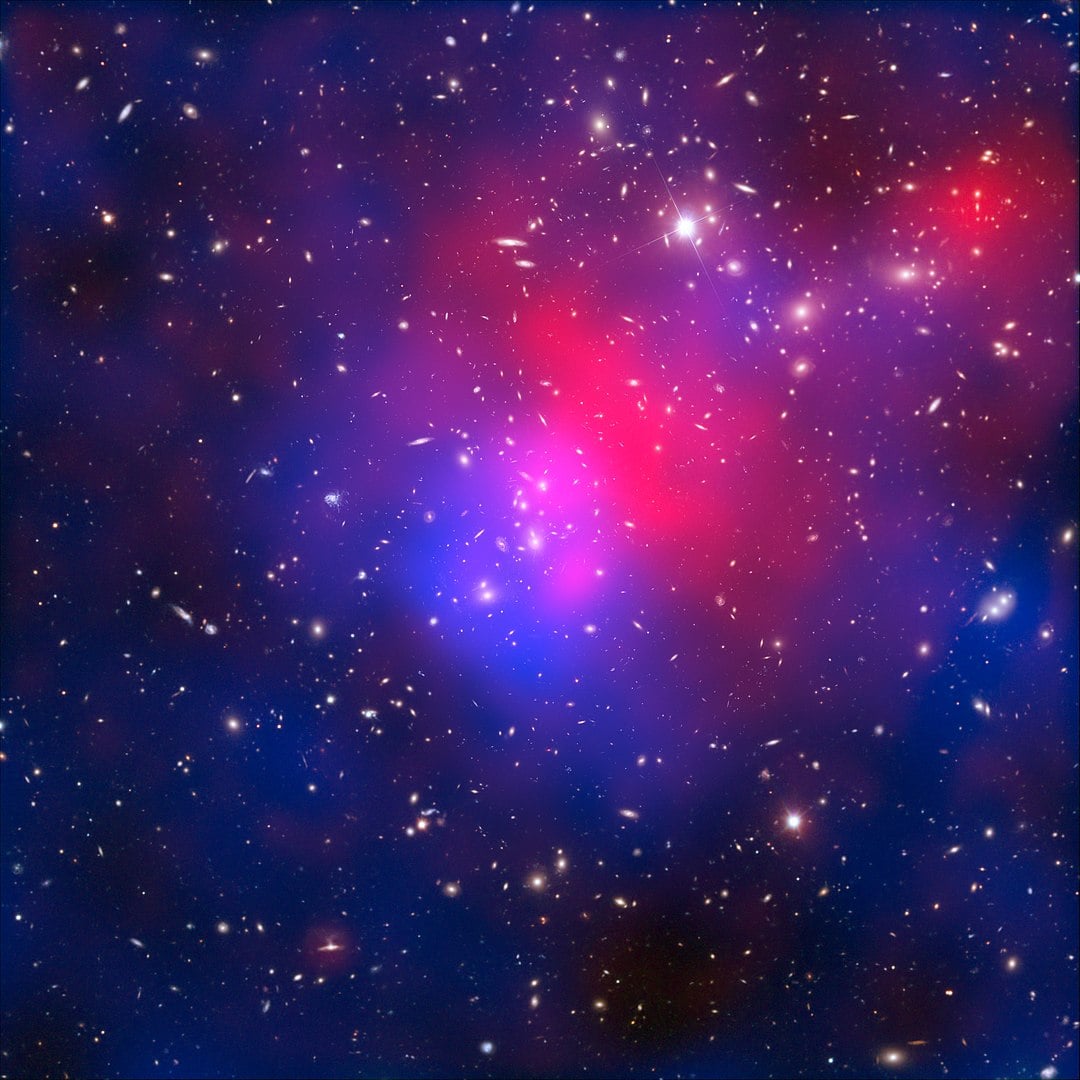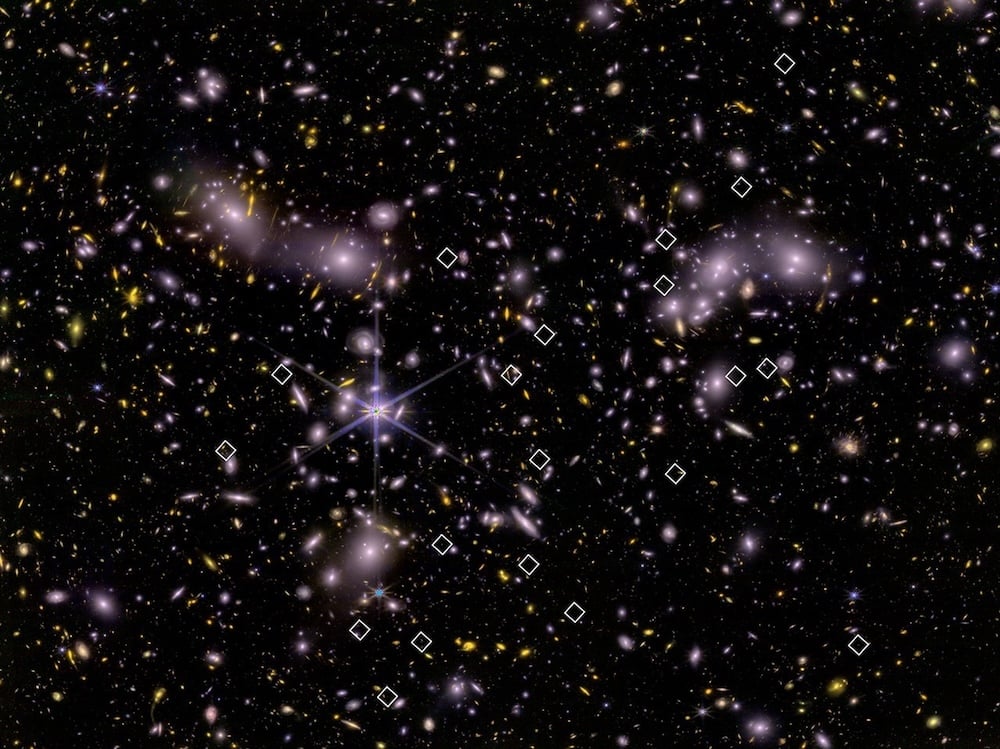Scientists using NASA's James Webb Space Telescope (JWST) have made an exciting discovery about the early universe. They found dozens of small galaxies that played a huge role in transforming our cosmos from a dark, foggy place into the bright, clear universe we see today.
Imagine the early universe as a room filled with thick fog. For its first billion years, space was clouded by neutral hydrogen gas that blocked most light from traveling far. Today, this same gas is "ionized," meaning it has been stripped of electrons and can let light pass through freely. This transformation, called reionization, essentially cleared the cosmic fog and allowed galaxies to shine brightly across vast distances.
 Artist impression of the James Webb Space Telescope (Credit : NASA)
Artist impression of the James Webb Space Telescope (Credit : NASA)
The newly discovered galaxies are surprisingly tiny compared to our Milky Way. You would need between 2,000 to 200,000 of these small galaxies to equal the mass of our own Galaxy. Despite their size, these miniature powerhouses were incredibly effective at producing ultraviolet light.
"When it comes to producing ultraviolet light, these small galaxies punch well above their weight," - Isak Wold from the Catholic University of America
These tiny galaxies had two key advantages that made them perfect fog-clearers. First, their small size meant they couldn't gather as much hydrogen gas around them, making it easier for their powerful ultraviolet light to escape into space. Second, they experienced intense periods of star formation called "starbursts" that not only created lots of ultraviolet light but also carved pathways through their own material, helping that light break free.
The research team used JWST's incredible infrared vision to peer back in time to when the universe was only 800 million years old, just 6% of its current age of 13.8 billion years. They focused on a galaxy cluster called Abell 2744, nicknamed "Pandora's cluster," which acts like a natural magnifying glass, making distant objects appear larger and brighter.
 Abell 2744, nicknamed Pandora's Cluster. The galaxies in the cluster make up less than five percent of its mass. (Credit : NASA, ESA)
Abell 2744, nicknamed Pandora's Cluster. The galaxies in the cluster make up less than five percent of its mass. (Credit : NASA, ESA)
The scientists looked for a specific green light signature from oxygen atoms that had lost electrons, a telltale sign of the high energy processes happening in these ancient galaxies. This green light, originally visible to the naked eye billions of years ago, had been stretched into infrared light by the time it reached Webb's sensors.
The team discovered 83 of these small starburst galaxies and studied 20 in detail. Their analysis suggests that if these ancient galaxies released about 25% of their ultraviolet light into surrounding space, similar to comparable galaxies today, they could account for all the energy needed to clear the fog that pervades the universe.
This discovery helps solve a long standing mystery about which types of objects were responsible for reionization. While astronomers previously debated whether large galaxies, small galaxies, or supermassive black holes drove this cosmic renovation, JWST's observations strongly support the small galaxy theory.
These findings remind us that sometimes the smallest players can have the biggest impact, fundamentally changing our understanding of how the universe evolved from darkness into light.
 Universe Today
Universe Today
